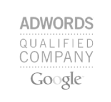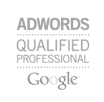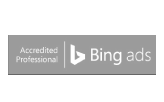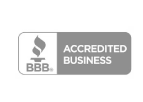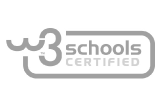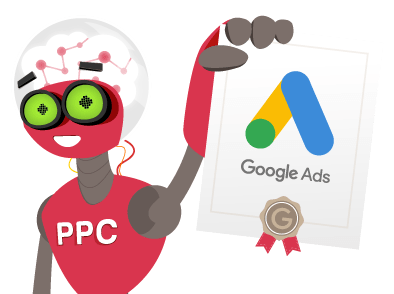Creating an effective brand awareness campaign is essential for any business looking to differentiate itself in a competitive market. Effective strategies enhance visibility and connect emotionally with your target audience, fostering loyalty and increasing engagement.
What is a Brand Awareness campaign?
A brand awareness campaign is a deliberate strategy for increasing a brand's visibility and recognition within its target market. Such campaigns aim to imprint a brand's identity, values, and products in consumers' minds, making it the first choice in a crowded market.
Is Brand Awareness Important
Brand awareness is vital for businesses aiming to gain a foothold and thrive competitively. It influences consumer perceptions and is vital in shaping their purchasing decisions. With high brand awareness, consumers are more likely to think of your brand first in the buying cycle, which can significantly boost sales.
Additionally, strong brand awareness builds trust and credibility, which are key to attracting new customers and retaining current ones. It also boosts word-of-mouth marketing, as satisfied customers are more inclined to recommend a reputable and recognized brand to others. Thus, investing in brand awareness is fundamental to increasing visibility and long-term business success.
How To Measure Brand Awareness

Assessing brand awareness is essential for gauging how visible and recognizable your brand is within your target audience. Here’s how you can effectively gauge this awareness:
Surveys
Deploy customer surveys to ask your audience directly about their familiarity with your brand. You can ask how often they've heard of your brand, how they perceive its qualities, or how it compares to competitors. This method can be scaled to reach a broad audience quickly and provide quantitative data measuring brand awareness over time.
Social Listening
Tools such as Hootsuite, Brandwatch, and Mention enable you to track mentions of your brand across social media and the web. These platforms help monitor the frequency of mentions, the context in which your brand is discussed, and the sentiment (positive, negative, or neutral) associated with these mentions. Social listening helps identify trends in public perception and awareness.
Website Traffic
Using analytics tools like Google Analytics, you can track the number of visitors who visit your website through direct entry (typing your URL) or organic search. High levels of direct traffic can indicate strong brand awareness, as it suggests people are specifically seeking out your brand.
Search Volume Data
Tools like Google Trends and the Google Keyword Planner can reveal the frequency of Google search results related to your brand. A rise in searches for these terms may suggest increasing awareness and interest.
Brand Recall and Recognition Tests
Conduct studies where participants are asked to recall a list of brands within a specific category (brand recall) or recognize a brand from a list of names shown to them (brand recognition). These tests help understand where your brand stands regarding consumer memory compared to competitors.
Earned Media
Evaluate the amount of media coverage your brand receives. High levels of earned media from press releases, news articles, or third-party reviews can raise brand awareness. Tools such as Google Alerts or BuzzSumo can monitor the frequency of your brand's mentions in the media and assess the reach of these mentions.
13 Ways To Build Brand Awareness Campaigns
Define Your Audience and Craft a Narrative
Defining your audience and crafting a compelling narrative are essential strategies to create brand awareness. Perform extensive audience research utilizing market data and analytics to pinpoint essential demographics such as age, geographic location, and interests. This meticulous targeting guarantees that your communication effectively reaches its intended audience, optimizing engagement. Subsequently, craft a storyline that harmonizes with the values and requirements of your audience. Ensure this narrative is genuine and captivating, aimed at eliciting emotions and forging a meaningful connection.
For instance, a pet food brand targeting eco-conscious consumers might emphasize its commitment to sustainability, showcasing how its products benefit both pets and the planet. Similarly, a tech company aiming at young professionals could focus on how their innovative products facilitate a smarter, connected lifestyle. These approaches elevate engagement levels and foster a deeper emotional connection with consumers, ultimately resulting in heightened brand loyalty and advocacy.
Utilize Social Media Effectively

Effectively utilizing social media is a strategic cornerstone for amplifying brand awareness in today's interconnected digital environment. To leverage social media, start by selecting platforms where your target demographic is most active; for instance, younger audiences tend to gravitate toward TikTok and Instagram. Emphasize creating compelling and shareable content, such as videos, infographics, and interactive social media posts, designed to resonate with your audience and stimulate engagement. Maintaining consistent branding across all your profiles is crucial to ensure instant recognition and familiarity with your brand's colors, logos, and voice.
Integrating paid social advertisements on platforms such as Facebook, Instagram, and LinkedIn can greatly expand your audience reach. These platforms offer sophisticated targeting capabilities that leverage user demographics, interests, and behaviors, thereby boosting the efficacy of your campaigns. The benefits of a well-managed social media strategy include heightened engagement, which boosts brand visibility and loyalty, and the cost-effectiveness of social media marketing, offering a greater return on investment than traditional media.
Brand awareness examples for social media include a beauty brand engaging users on Instagram with makeup tutorials and customer testimonials, effectively demonstrating product benefits, and encouraging sharing. However, if not managed correctly, consumers may focus on the product and not the brand. Similarly, a technology company might utilize LinkedIn to distribute industry insights and white papers, thereby establishing itself as a thought leader to attract business clientele.
Leverage Content Marketing

Leveraging content marketing for your next brand awareness campaign is about creating and disseminating valuable, relevant content tailored to attract and engage a specific audience, thereby driving profitable actions.
Begin by identifying your audience's needs, questions, and interests to shape content that directly addresses these topics. Broaden your content formats to include blogs, videos, infographics, podcasts, and case studies to accommodate diverse preferences and bolster engagement. Ensure all content is optimized for search engines (SEO) to enhance visibility and attract organic traffic to your website. Consistently adhere to a scheduled publishing routine to sustain audience interest and solidify your brand's reputation as a dependable source of information.
The benefits of a robust content marketing strategy include enhanced engagement through quality content that keeps your audience interested, increased traffic from higher search engine rankings, and establishing your brand as an authority in its field.
For instance, a health food brand might publish weekly blog posts on nutrition tips and healthy recipes, attracting health-conscious consumers. At the same time, a tech company could create tutorial videos and detailed product reviews, boosting trust and perceived expertise in their technology. Through these strategies, content marketing creates brand awareness and builds lasting relationships with an audience, fostering loyalty and encouraging advocacy.
Incorporate Ad Extensions and Remarketing
Incorporating ad extensions and remarketing into your brand awareness campaigns can significantly enhance the effectiveness of your PPC efforts. Ad extensions, such as site links, call, and location extensions, enrich your ads with additional information and interactive options directly in the search results. These extensions make your ads more prominent and provide quick pathways for users to engage with your site or contact you directly. For example, a retailer might use site links to direct users to popular product categories like "Men’s Shoes" or "Women’s Jackets," enhancing user experience and guiding potential customers more efficiently.
Conversely, remarketing focuses on reconnecting with users who have previously visited your website but did not complete a desired action or conversion. By using cookies to track these visitors, you can subsequently display tailored ads to them on other websites they browse, keeping your brand top-of-mind and increasing the chances of conversion. For instance, a travel agency might use remarketing to show special travel deals to users who looked at holiday packages on their site but did not make a booking.
Together, ad extensions and remarketing improve the visibility and engagement of your ads and boost conversion rates by re-engaging interested users and providing them with valuable information directly in the search results. These strategies ensure that your PPC campaigns are more targeted and effective, maximizing your advertising spending and growing brand awareness.
Community Building and CSR
Integrating community building and Corporate Social Responsibility (CSR) into your brand awareness campaigns can significantly enhance your brand’s visibility and deepen customer loyalty. For community building, actively engage with your audience on social media by hosting Q&A sessions or interactive polls, which foster interaction and strengthen community ties. You can also create exclusive groups that offer loyal customers special perks like early product access or insider information.
When selecting CSR initiatives, prioritize those that reflect your brand’s core values and align with your target audience’s interests, such as environmental sustainability or social welfare. Transparently communicate these efforts to foster trust and bolster your brand’s reputation.
The benefits of these strategies include increased brand loyalty as these efforts connect emotionally with consumers, turning them into brand advocates. They also naturally boost your brand's visibility through word-of-mouth and social sharing.
For example, a tech company could foster a community of tech enthusiasts to exchange ideas, enhancing user engagement. At the same time, a clothing retailer might introduce a recycling program that offers discounts for returning used clothes, demonstrating a commitment to sustainability. Both strategies elevate brand awareness and position your brand positively in the market, attracting and retaining loyal customers. Remember, positive experience and perception equals positive brand equity.
Branded Merchandise and Freebies
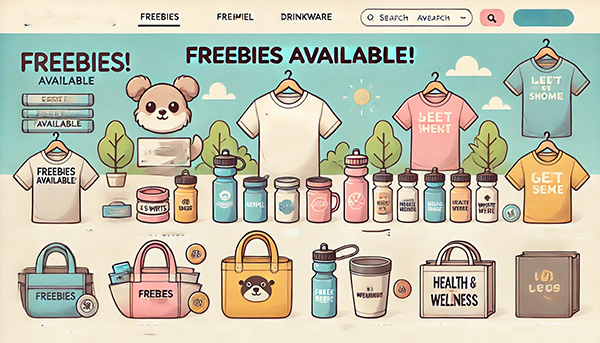
Incorporating branded merchandise and freebies to increase brand awareness is a highly effective strategy for increasing recognition and fostering customer loyalty. Begin by choosing products that appeal to your target audience and are consistent with your brand's identity.
For instance, a tech company might distribute branded USB drives, whereas a fitness brand could choose to offer water bottles or yoga mats. It's crucial to ensure the merchandise is of good quality, as this reflects on your brand's image and increases the likelihood of the items being used frequently, thereby extending your brand's exposure.
Consider strategic distribution methods such as trade shows, industry events, or social media giveaways to reach different segments of your target audience effectively. Branded merchandise also has the benefit of enhanced visibility, as these items keep your brand in public view not just by the recipients but also by those around them.
Additionally, such freebies can boost engagement, particularly if they are part of a contest or giveaway that encourages interactive participation with your brand online. They also generate goodwill, creating positive associations with your brand and potentially converting recipients into loyal customers.
Digital and Physical Advertising
Combining digital and physical advertising is a dynamic strategy for enhancing brand awareness campaigns, leveraging the unique strengths of each to maximize overall impact. For digital advertising, focus on platforms like social media, search engines, and websites where precision targeting can be utilized. This allows for ads to be tailored specifically to user behavior, interests, and online activities, such as using Facebook and Google Ads to reach specific demographic groups. On the physical side, traditional methods like billboards, print ads, and direct mail should be used to solidify the brand's presence in everyday physical spaces where the audience frequents.
The benefits of this approach are multifaceted. Digital campaigns excel in targeting specific audiences and providing valuable analytics, while physical advertising establishes a tangible presence that can influence a local audience. This strategy ensures that the brand's message is reinforced across different mediums, enhancing the frequency of consumer exposure and aiding in brand recall.
For instance, a retailer might use online ads as teasers for a new product launch while using striking billboards in high-traffic areas to capture online and offline attention. Similarly, a service provider could employ targeted Google Ads to reach potential clients immediately while also using local newspaper ads to build trust within the community.
Integrated Marketing Communications
Integrated Marketing Communications (IMC) is crucial for a cohesive brand awareness campaign, ensuring all communication and messaging across various channels are carefully linked. To implement IMC effectively, start by ensuring that all marketing channels, including digital ads, social media, emails, and traditional media, consistently convey your brand message. Plan your campaigns so that each channel complements and supports the others—for instance, use social media teasers to build excitement around a major product launch, supplemented by press releases and targeted email campaigns.
The benefits of IMC include enhanced brand cohesion, making your brand more recognizable and reliable to consumers, and increased campaign effectiveness, as harmonized messages across multiple platforms can significantly boost engagement and conversion rates. Additionally, integrating your marketing efforts can be cost-efficient by optimizing resources and reducing redundant efforts.
For example, if launching a new fitness tracker, a company might create teaser content for social media to generate buzz, followed by emails detailing the product features and supported by Google ads targeting fitness enthusiasts. This coordinated approach not only ensures consistent branding but also leverages the strengths of each platform to maximize the campaign's reach and impact.
Engagement Through Events
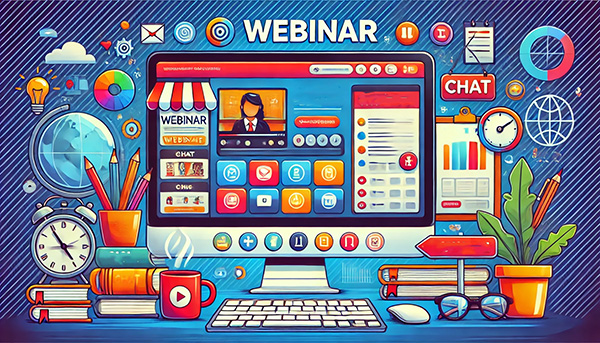
Engagement through events is a powerful component of building brand awareness and connecting directly with your audience. Hosting or sponsoring events such as webinars, workshops, or industry conferences boosts visibility and establishes your brand as an authority in your field. These events provide a platform for interactive experiences and real-time feedback, enhancing customer relationships and loyalty.
For instance, a tech company might organize a webinar focusing on the latest advancements in cybersecurity, drawing a specific audience keen on cutting-edge technology solutions. This approach educates prospective customers and actively involves them, cultivating a community atmosphere and strengthening brand loyalty.
Strategic Public Relations
Strategic public relations (PR) is essential for elevating your brand awareness campaign. PR can significantly amplify your brand's visibility and credibility by crafting compelling narratives and engaging with the media. Focus on developing strong relationships with journalists and influencers who can help broadcast your message to a wider audience.
For example, a well-executed press release about your latest product innovation can garner media attention and generate buzz. Moreover, contemplate hosting press events or taking part in community activities that resonate with your brand's principles. These initiatives boost visibility and establish your brand as a proactive and esteemed participant within your industry. Strategic PR is not just about visibility; it's about creating a reputable image that attracts and retains customers.
Feedback Loops and Consumer Insights
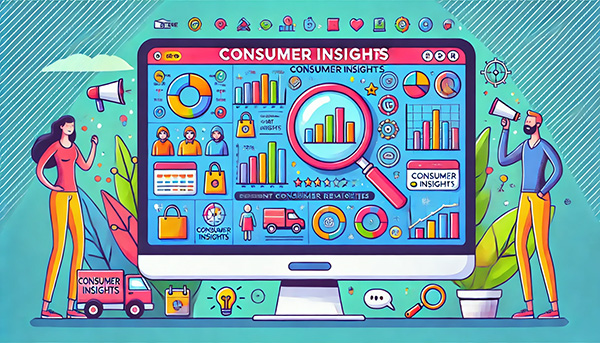
Incorporating feedback loops and consumer insights into your next brand awareness campaign is crucial for effectively tailoring your marketing efforts to meet audience needs. Leverage surveys, social media interactions, and customer reviews to collect valuable feedback directly from your target audience. This real-time data allows you to understand consumer preferences, pain points, and expectations, enabling you to adjust your campaign strategies dynamically.
For example, if feedback suggests a growing preference for environmentally conscious products, you could emphasize your brand's dedication to sustainability in your communications. By actively listening and responding to consumer insights, you enhance campaign relevance and foster stronger connections with your audience, ultimately boosting brand loyalty and advocacy. This strategy informs your marketing decisions and demonstrates to customers that their opinions are valued, enhancing their overall engagement with your brand.
Leverage Technology and Innovation
Utilizing technology and innovation is crucial for advancing your brand awareness campaign. Harness the latest digital tools and platforms to create more engaging, interactive experiences that capture audience attention and drive engagement.
For example, utilize augmented reality (AR) to allow potential customers to experience your products virtually or employ AI-driven chatbots on your website and social media to provide instant, personalized customer interactions. These tech-forward strategies set your brand apart as a leader in innovation and significantly enhance the user experience, making your brand more memorable and boosting engagement rates.
Monitor and Adapt
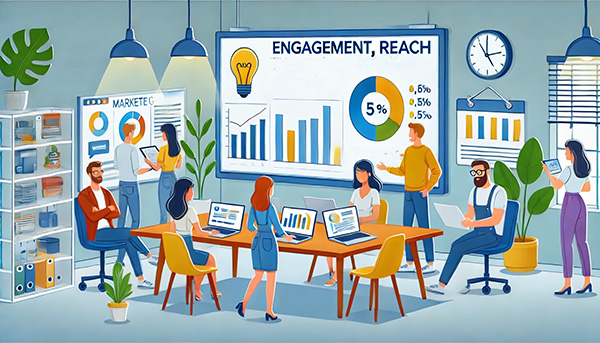
For your next brand awareness campaign, monitoring performance and adapting your strategies continuously is crucial. Use analytics tools to monitor engagement, reach, and the overall effectiveness of your campaign in real time. By analyzing these metrics, you can pinpoint what connects with your audience and areas that might require tweaking.
For example, if certain content types or channels are underperforming, pivot your approach or enhance your messages in those areas. This dynamic process of monitoring and adapting optimizes your campaign’s effectiveness and ensures that your brand remains relevant and responsive to consumer trends and feedback. Staying agile and responsive to data insights allows you to refine your campaign, maximizing impact and ensuring your brand messaging stays aligned with audience expectations and market conditions.


